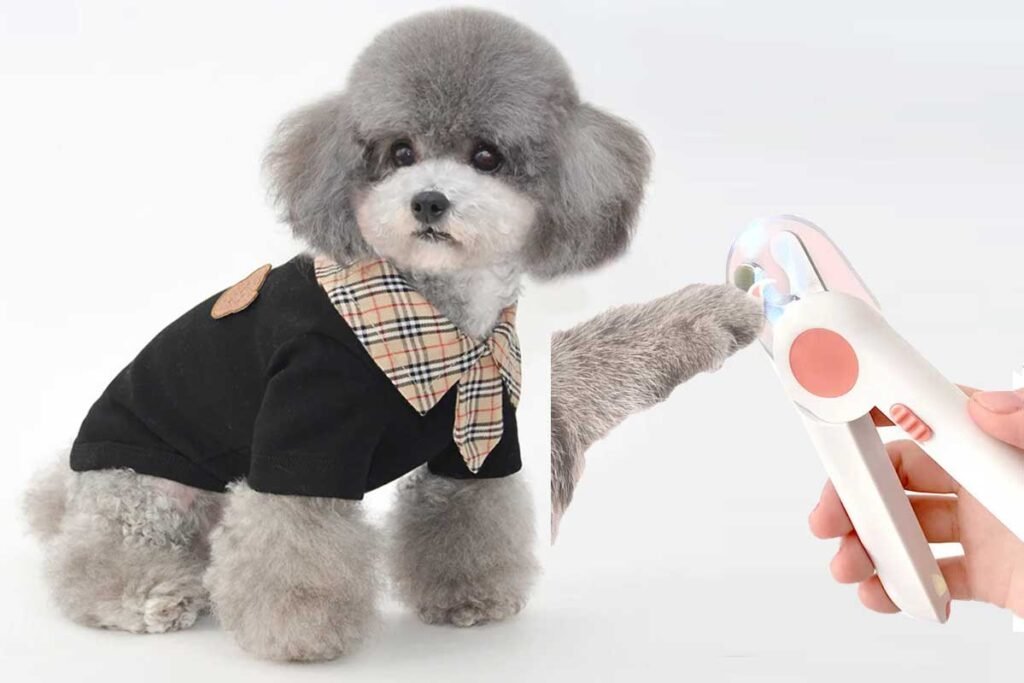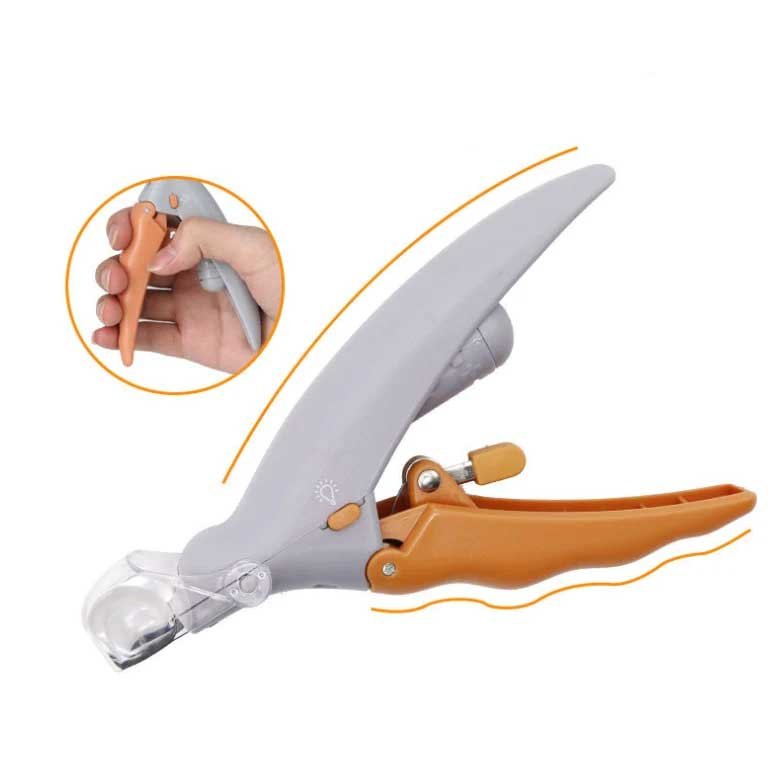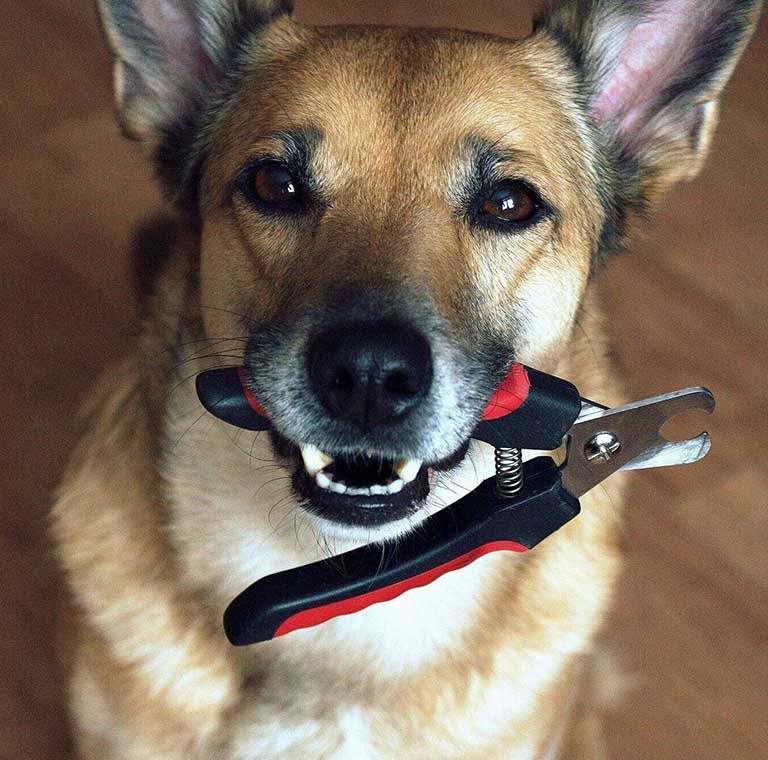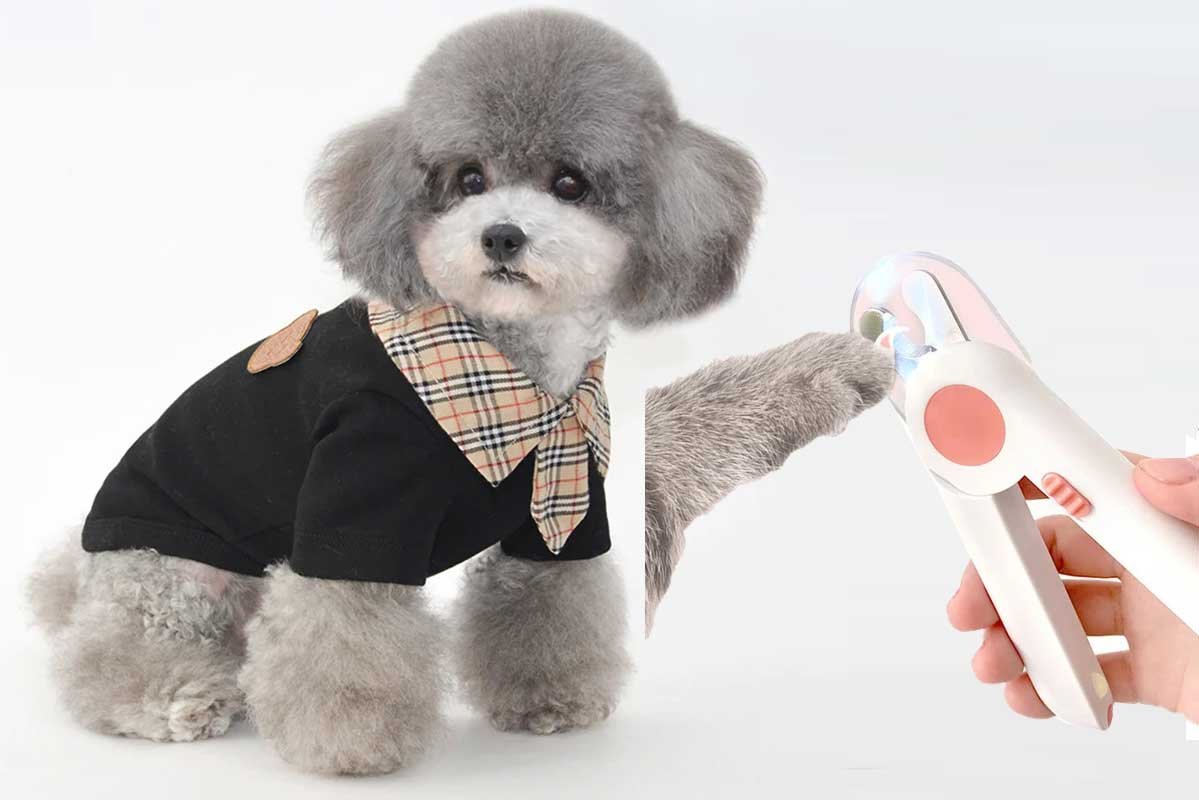
Safely Trimming Your Pet’s Nails trimmed is an essential part of their overall grooming routine. Overgrown nails can cause discomfort and even lead to health issues for your furry companions. However, the thought of trimming your pet’s nails can be daunting, especially if you’ve never done it before. Don’t worry, though! With the right knowledge and tools, nail trimming can be a straightforward and stress-free process. In this blog we will guide you How to Trim Pet Nails.
In this comprehensive guide, we will walk you through the steps to safely trim your pet’s nails. Whether you have a dog, cat, or small animal, we’ve got you covered. So, let’s get started on the path to well-groomed and happy pets!
Gather the Right Tools
Before you begin the nail-trimming process, it’s essential to gather the right tools. For dogs and cats, a pair of pet nail clippers or trimmers is a must. There are different types of clippers available, such as guillotine-style, scissor-style, and grinder-type. Choose the one that you and your pet are most comfortable with. Additionally, keep styptic powder or cornstarch on hand in case your nails are accidentally cut too short.
For small animals like rabbits, guinea pigs, or birds, you may need specialized nail clippers designed for their size. Consult with your veterinarian or a professional groomer to find the most suitable option.

Table of Contents Comprehensive Guide For Triming Pets Nails
Video: How to Trim Your Pet's Nails
Prepare Your Pet before Safely Trimming Nails
Before diving into Safely Trimming Your Pet’s Nails process, it’s essential to prepare your pet for the experience. Take a few moments to familiarize them with the tools and create a positive association. Show your pet the clippers or trimmers and offer them treats or praise to create a sense of comfort. This step helps reduce anxiety and makes the experience more enjoyable for your pet.
More over, During the initial sessions, you can also practice gently touching your pet’s paws and nails. Gradually increase the time and pressure to get them used to having their paws handled.

Choose the Right Environment
Selecting the right environment for nail trimming is crucial to ensuring a calm and controlled session. Find a quiet and well-lit area where you and your pet can relax without distractions. Having good lighting will allow you to see the tips of your pet’s nails clearly, reducing the risk of cutting too deeply.
If you’re worried about your pet moving too much during the process, consider having someone else hold them or distract them with treats while you trim the nails. Alternatively, you can place your pet on a non-slip surface to prevent unnecessary slipping or sliding.

The Trimming Process - A Step-by-Step Guide
How Safely Trimming Your Pet’s Nails is a very difficult task. Keeping your pet’s nails at a proper length is crucial for their comfort and health. Long nails can cause discomfort, lead to painful injuries, and even affect their ability to walk properly. While pet nail trimming might seem intimidating, it can be a straightforward and stress-free process if done correctly. Here’s a step-by-step guide on how to safely cut your pet’s nails:
- Gather the Right Tools: Before you start, make sure you have the appropriate tools: a high-quality pet nail clipper or grinder. Choose the right size for your pet – larger clippers for dogs and smaller ones for cats. Pet grinders can also be effective, especially for pets who are nervous about traditional clippers.
- Get Your Pet Acquainted: Introduce the clippers or grinder to your pet before starting the actual trimming. Let them sniff and investigate the tools to ease any initial anxiety. Reward them with treats and praise to create a positive association.
- Find the Quick: The “quick” is the pink area inside the nail that contains blood vessels and nerves. Be careful not to cut into the quick, as it can be painful and cause bleeding. In pets with light-colored nails, the quick is more visible, while in dark-colored nails, it may be harder to spot.
- Trim Gradually: Start by trimming a small portion of the nail, staying away from the quick. If your pet has extremely long nails, trim them gradually over a few sessions to avoid cutting too much at once. Patience is key – take breaks and reward your pet throughout the process.
- Use a Steady Hand: Hold your pet’s paw gently but firmly. Steady the nail clipper or grinder and make controlled, decisive cuts. Avoid quick, jerky movements that may startle your pet.
- Watch for Cues: Pay attention to your pet’s body language. If they seem uncomfortable, stressed, or show signs of distress, take a break and try again later or on another day. Always prioritize your pet’s comfort and well-being.
- Be Prepared for Accidents: Even with the utmost care, accidents can happen. If you accidentally cut the quick and your pet starts bleeding, don’t panic. Use styptic powder or a styptic pencil to stop the bleeding. If the bleeding persists or you are unsure how to handle it, contact your veterinarian.
- Reward and Praise: After a successful nail trimming session, shower your pet with praise and rewards. Positive reinforcement will help your pet associate the process with a positive experience.
Final Words Regarding Cutting Your Pet's Nails
Trimming your pet’s nails may seem intimidating, but with patience and practice, it becomes a routine part of your pet’s grooming regimen. Always remember to take it slow, use positive reinforcement, and reward your pet for their cooperation. If you’re uncertain or uncomfortable with the process, consider seeking guidance from a professional groomer or your veterinarian.
Regular nail trimming ensures your pet’s paws stay healthy and comfortable, contributing to their overall well-being. With our step-by-step guide and proper care, you and your pet can enjoy a stress-free nail-trimming experience. Happy grooming!

